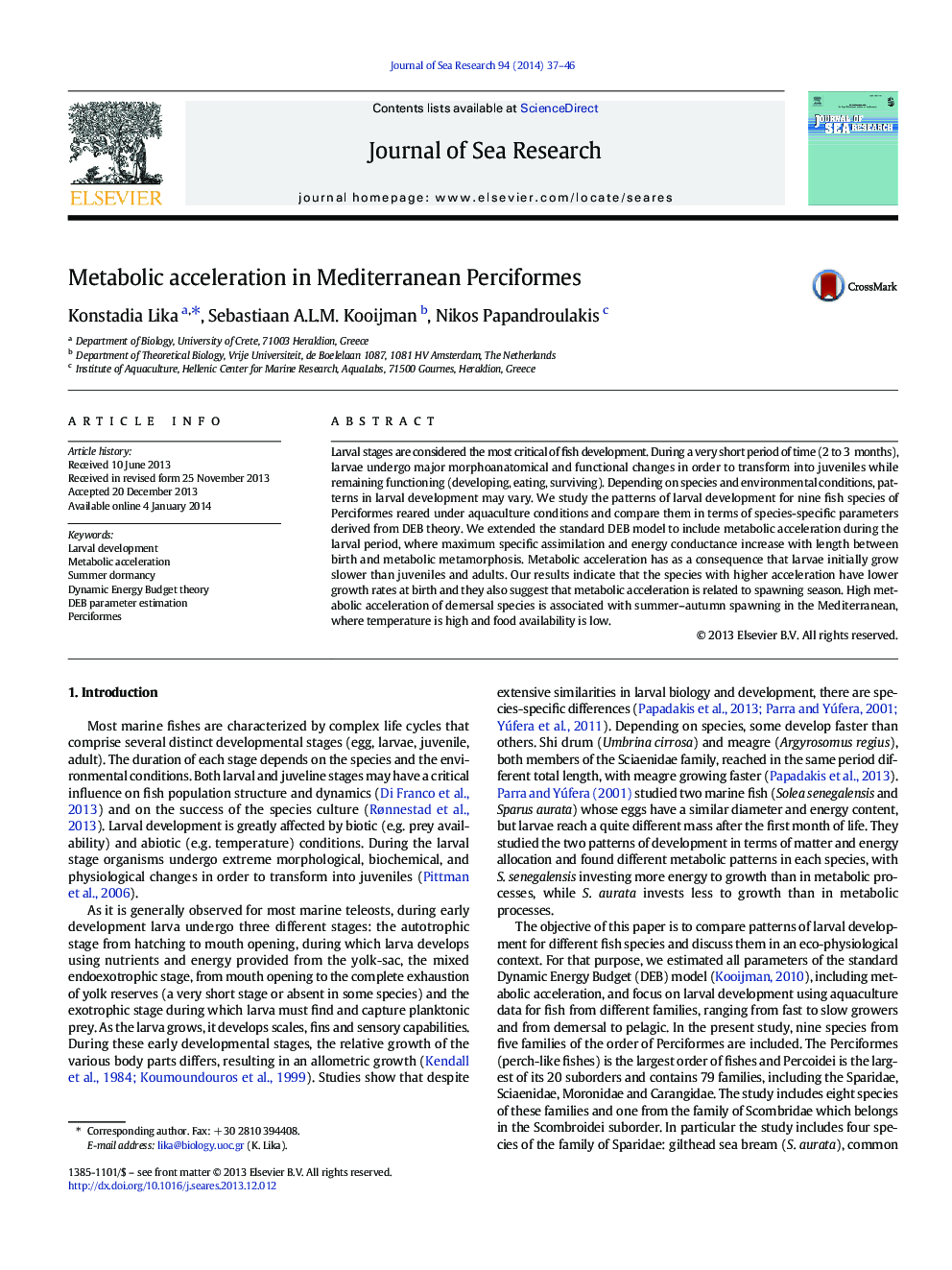| کد مقاله | کد نشریه | سال انتشار | مقاله انگلیسی | نسخه تمام متن |
|---|---|---|---|---|
| 4549724 | 1627480 | 2014 | 10 صفحه PDF | دانلود رایگان |

• Metabolic acceleration of fish larvae
• Accelerated larvae have lower metabolic rate before birth than after metamorphosis.
• Metabolic acceleration is related to spawning season and summer dormancy.
• Demersal species spawning in warm temperate seas have high metabolic acceleration.
Larval stages are considered the most critical of fish development. During a very short period of time (2 to 3 months), larvae undergo major morphoanatomical and functional changes in order to transform into juveniles while remaining functioning (developing, eating, surviving). Depending on species and environmental conditions, patterns in larval development may vary. We study the patterns of larval development for nine fish species of Perciformes reared under aquaculture conditions and compare them in terms of species-specific parameters derived from DEB theory. We extended the standard DEB model to include metabolic acceleration during the larval period, where maximum specific assimilation and energy conductance increase with length between birth and metabolic metamorphosis. Metabolic acceleration has as a consequence that larvae initially grow slower than juveniles and adults. Our results indicate that the species with higher acceleration have lower growth rates at birth and they also suggest that metabolic acceleration is related to spawning season. High metabolic acceleration of demersal species is associated with summer–autumn spawning in the Mediterranean, where temperature is high and food availability is low.
Journal: Journal of Sea Research - Volume 94, November 2014, Pages 37–46